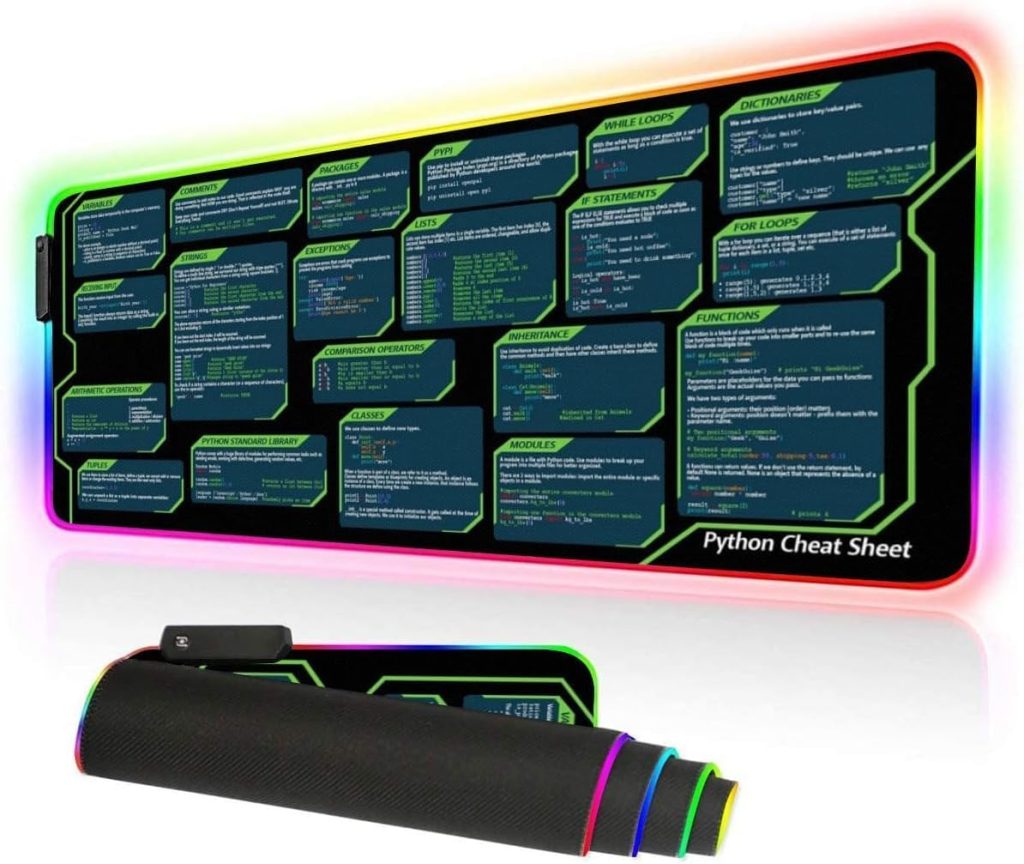
When confronted with the task of visualizing large datasets using Matplotlib, one swiftly realizes that the sheer volume of data can transform a simpler plotting endeavor into a labyrinthine challenge. This phenomenon stems from several intertwined factors that not only affect rendering speeds but also impact the clarity of the visualizations themselves.
First and foremost, the computational burden of processing large amounts of data can lead to significant slowdowns. Each point in a dataset requires interpretation, and when the dataset burgeons into the millions or even billions of points, the time taken for rendering each of these points accumulates exponentially. That’s particularly evident when attempting to display complex visualizations such as scatter plots or 3D plots, where every additional point can contribute to a staggering increase in rendering time.
Moreover, the graphical representation of data is inherently limited by the resolution of the display medium. Simply put, more data does not necessarily equate to more information. When too many points are plotted in a single figure, they can overlap, resulting in visual clutter and obscuring meaningful patterns or trends. The phenomenon known as ‘overplotting’ becomes prevalent, where individual data points become indistinguishable from one another, thereby detracting from the overall communicative power of the visualization.
Additionally, the memory footprint required to store and manipulate large datasets can strain the capabilities of typical computing environments. Matplotlib, while powerful, has its limitations in handling vast arrays of data efficiently. As the data size grows, one may encounter memory errors, which can interrupt the plotting process and frustrate the user’s intent to derive insights from the data.
In light of these challenges, it becomes imperative to approach the visualization of large datasets with a keen understanding of the underlying complications. Embracing a mindset that values not just the quantity of data points, but also their quality and relevance, can pave the way for more effective and insightful visualizations.
Techniques for Efficient Data Sampling and Aggregation
In the face of the aforementioned challenges, the journey toward effective data visualization necessitates a strategic approach to data sampling and aggregation. The objective here is to distill the essence of the data without losing its inherent character, allowing us to create visualizations that are both informative and aesthetically pleasing. By employing techniques that prioritize efficiency, one can transcend the limitations imposed by sheer data volume.
Data sampling, in its simplest form, involves selecting a representative subset of the data points from a larger dataset. This process can be executed in various ways, each with its own philosophical underpinnings. One may opt for random sampling, where points are selected at random, thereby preserving the dataset’s overall statistical properties. This method, however, may inadvertently lead to the exclusion of less frequent but potentially significant points. An alternative approach, stratified sampling, ensures that different segments of the data are proportionately represented, thus capturing the diversity of the dataset while maintaining a manageable size.
Aggregation, on the other hand, involves summarizing the data points within certain parameters, often leading to a more digestible form of the original dataset. Techniques such as binning, where data points are grouped into bins and represented by a single value (such as the mean or median of the bin), can dramatically reduce the number of points plotted. This not only enhances performance but also mitigates the risk of overplotting. The beauty of aggregation lies in its ability to reveal trends and patterns that might be obscured in a sea of data points.
Here’s a practical illustration of how one might implement random sampling and aggregation using Python with NumPy and Matplotlib:
import numpy as np
import matplotlib.pyplot as plt
# Generate a large dataset of random points
np.random.seed(42)
data_size = 1000000
x = np.random.rand(data_size)
y = np.random.rand(data_size)
# Random sampling
sample_size = 10000
indices = np.random.choice(data_size, sample_size, replace=False)
x_sampled = x[indices]
y_sampled = y[indices]
# Aggregation via binning
bins = 50
hist, xedges, yedges = np.histogram2d(x_sampled, y_sampled, bins=bins)
xpos, ypos = np.meshgrid(xedges[:-1], yedges[:-1], indexing="ij")
xpos = xpos.ravel()
ypos = ypos.ravel()
zpos = 0
# Construct arrays with the dimensions for the bars
dx = dy = 1/bins * np.ones_like(zpos)
dz = hist.ravel()
# Create a 3D bar plot
fig = plt.figure(figsize=(10, 7))
ax = fig.add_subplot(111, projection='3d')
ax.bar3d(xpos, ypos, zpos, dx, dy, dz, zsort='average')
ax.set_title('Aggregated 3D Histogram of Sampled Data')
plt.show()
In this example, the code generates a vast dataset of random points, from which a manageable sample is drawn. The subsequent aggregation transforms the sampled data into a 3D histogram, showcasing the distribution in a visually coherent manner. Such techniques not only enhance performance but also empower the user to derive meaningful insights without succumbing to the chaos of overplotting.
In essence, the careful selection and aggregation of data points allow us to traverse the fine line between information richness and clarity. By embracing these techniques, one can wield the power of Matplotlib to create compelling visual narratives that resonate with the audience, even amidst the overwhelming cacophony of large datasets.
Using Faster Rendering Options in Matplotlib
As we continue our exploration of optimizing Matplotlib for large datasets, we must turn our attention to the realm of rendering options. The rendering process, while often taken for granted, can be a significant bottleneck when dealing with extensive data. Fortunately, Matplotlib offers several alternatives that can expedite this complex operation, allowing the artist of data to paint with swifter strokes.
One of the most prominent options is to switch from the default rendering backend to one this is more adept at handling large volumes of data. For instance, the ‘Agg’ backend, which is a raster graphics backend, is particularly useful for generating plots without the overhead of displaying them on screen. This option is especially valuable when producing plots for reports or web applications, where the output is a static image rather than an interactive display.
import matplotlib
matplotlib.use('Agg') # Use the Agg backend for faster rendering
import matplotlib.pyplot as plt
import numpy as np
# Generate a large dataset
np.random.seed(42)
data_size = 1000000
x = np.random.rand(data_size)
y = np.random.rand(data_size)
# Create a scatter plot using the Agg backend
plt.figure(figsize=(10, 6))
plt.scatter(x, y, alpha=0.1) # Lower alpha for better visibility
plt.title('Scatter Plot with Large Dataset')
plt.savefig('scatter_plot.png') # Save the plot as an image
plt.close()
In this example, we set the backend to ‘Agg’ and generate a scatter plot from a million points. The alpha parameter is adjusted to enhance visibility, reducing the opacity of each point to mitigate overplotting. By saving the figure directly to a file, we bypass the rendering overhead associated with displaying it interactively, thus speeding up the process significantly.
Another aspect to consider is the choice of plot type. Certain visualizations, such as hexbin plots or density plots, can convey the underlying structure of the data more effectively than traditional scatter plots. These alternatives can aggregate data points into bins or densities, providing a clearer picture of data distribution while dramatically reducing the number of individual points that need to be rendered.
# Create a hexbin plot
plt.figure(figsize=(10, 6))
plt.hexbin(x, y, gridsize=50, cmap='Blues')
plt.colorbar(label='Count in bin')
plt.title('Hexbin Plot of Large Dataset')
plt.savefig('hexbin_plot.png')
plt.close()
By employing a hexbin plot, we can visualize the same dataset in a more interpretable manner. The grid size and color map parameters allow for customization, making it easier to identify clusters and trends within the data without the chaos of individual data points competing for attention.
Furthermore, when dealing with large datasets, it is prudent to leverage the capabilities of the ‘fast’ and ‘high-performance’ options in Matplotlib. These options include using features such as ‘blit’ for animated plots, which can dramatically increase rendering speed by only redrawing parts of the figure that have changed. While this may not apply directly to static plots, understanding the intricacies of rendering can prepare one for dynamic visualizations in the future.
# Example of using blit in an animation
import matplotlib.pyplot as plt
import numpy as np
from matplotlib.animation import FuncAnimation
fig, ax = plt.subplots()
xdata = np.linspace(0, 2*np.pi, 100)
line, = ax.plot(xdata, np.sin(xdata))
def update(frame):
line.set_ydata(np.sin(xdata + frame / 10)) # Update the data
return line,
ani = FuncAnimation(fig, update, frames=100, blit=True)
plt.show()
In this animation example, only the sine wave is updated on each frame, enhancing performance by minimizing unnecessary redraws of static elements. This idea of efficiency in rendering is important when one aspires to visualize data that is not merely large in quantity but also rich in insights.
Ultimately, the act of rendering becomes a dance—a harmonious interplay between data size, visualization type, and computational efficiency. By embracing faster rendering options, one can transcend the limitations imposed by data volume, transforming what could be an arduous slog into a fluid and expressive journey through the world of visualized data.
Best Practices for Memory Management and Performance Tuning
Memory management and performance tuning are not merely technical considerations but rather a cerebral dance between the available resources and the demands of visualization. When operating on large datasets, it’s vital to cultivate an understanding of how memory is utilized, manipulated, and sometimes, regrettably, wasted. The delicate art of tuning performance lies in recognizing the subtleties of data handling and optimizing the interaction between the data and the visualization library.
At the core of memory management is the notion of data types. Employing the appropriate data type can yield significant memory savings. For instance, when working with large arrays, one can often substitute the default float64 with float32, or even integer types, when precision permits. This seemingly trivial adjustment can lead to substantial reductions in memory consumption, allowing the system to allocate resources more effectively.
import numpy as np
# Create a large array with default float64
large_array_default = np.random.rand(1000000)
# Create a large array with float32
large_array_float32 = np.random.rand(1000000).astype(np.float32)
# Check memory usage
print(f'Memory usage (float64): {large_array_default.nbytes / 1024**2} MB')
print(f'Memory usage (float32): {large_array_float32.nbytes / 1024**2} MB')
As illustrated in the code snippet, the memory footprint of these two arrays can be starkly different. Such reductions can cascade through the entire data processing pipeline, leading to enhanced performance when visualizing datasets in Matplotlib.
Moreover, one must not overlook the importance of data structures. Using efficient data structures that minimize overhead can lead to improved performance. For example, using NumPy arrays over Python lists allows for faster computations due to contiguous memory allocation and avoidance of Python’s inherent overhead. Similarly, using Pandas DataFrames can facilitate efficient data manipulation, especially when dealing with large datasets where operations like filtering and aggregating become imperative.
import pandas as pd
# Create a large DataFrame
df = pd.DataFrame({
'x': np.random.rand(1000000),
'y': np.random.rand(1000000)
})
# Filtering the DataFrame
filtered_df = df[df['x'] > 0.5]
print(f'Filtered DataFrame size: {filtered_df.shape}') # Size after filtering
As one traverses the landscape of large datasets, the ability to filter and manipulate data efficiently becomes paramount. The use of indexing, both in NumPy and Pandas, can significantly reduce the time complexity of these operations, permitting one to hone in on the data of interest without wading through unnecessary noise.
Furthermore, the actual rendering process in Matplotlib can be optimized through judicious use of the `draw` and `show` functions. By only updating the figure when necessary and employing the `canvas.flush_events()` method, one can mitigate the memory overhead associated with rendering large quantities of data. Embracing this philosophy of minimalism—rendering only what is essential—can lead to smoother and more responsive visualizations.
import matplotlib.pyplot as plt
# Create a large plot
plt.figure()
plt.scatter(np.random.rand(1000000), np.random.rand(1000000), alpha=0.1)
plt.title('Large Scatter Plot')
# Instead of plt.show(), we can use the following for better control
plt.draw()
plt.pause(0.1) # Pause allows GUI event processing
plt.close()
This example demonstrates a conscious choice to control the rendering flow, thus maintaining performance even while grappling with vast amounts of data. The `plt.pause()` function not only allows for GUI event processing but also grants an ephemeral glimpse into the dynamic nature of the plotted data without succumbing to the inertia of excessive rendering calls.
Finally, one must remain vigilant about memory leaks, which can stealthily erode the performance of even the most meticulously optimized applications. Using tools such as memory profilers can illuminate memory consumption patterns and reveal areas ripe for optimization. The act of profiling one’s code is akin to introspective reflection—unearthing inefficiencies that may otherwise remain obscured in the intricate web of data and visualization.
# Example usage of memory profiler
from memory_profiler import profile
@profile
def memory_intensive_function():
# Simulate memory-intensive operations
large_data = np.random.rand(10000000)
plt.plot(large_data)
memory_intensive_function()
In summation, the journey through memory management and performance tuning in Matplotlib is one of conscious decision-making and astute resource management. By prioritizing efficient data types, structures, and rendering methods, one can craft visualizations that not only convey the depth of the dataset but also do so with elegance and grace, unfettered by the burdens of excessive memory use or sluggish performance.






